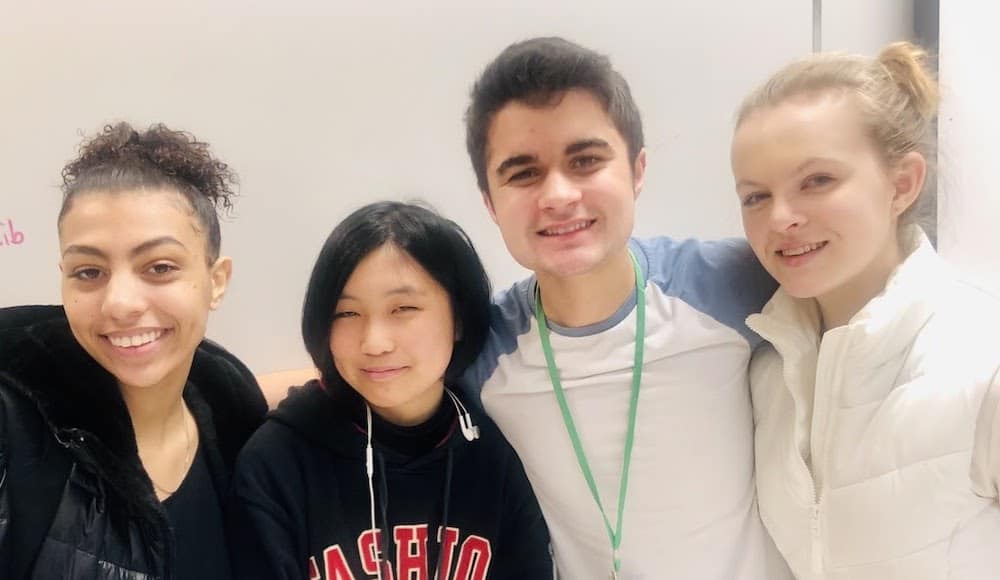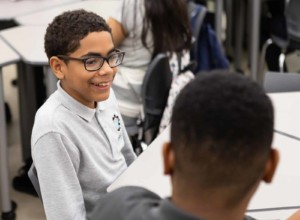Graduation and Beyond After COVID-19 School Closures

By: Rebecca Midles, Kelly Niccolls
What does it mean to be a graduating high school student in 2020? Traditionally, at the end of this school year, students in the class of 2020 will receive in some way or form, a diploma informing them, “You made it!”
But made what exactly? With the elimination of school attendance, required coursework, senior year social experiences, and the upheaval of the end of the course and placement exam processes, how does a high school senior navigate these next few months towards the closure of their K-12 learning experience? Every state and district is different in terms of graduation requirements and crisis response protocols and infrastructure.
With some state departments discouraging districts from ‘turning on’ online learning because not everyone will have access, there is also a growing acknowledgment that high school students may not be earning credit toward graduation during this school semester. And while each state and district will make accommodations to support a revised path to graduation, an argument could be made that these students are still entitled to this missed learning opportunity. How can districts and states best personalize options for seniors, knowing their experiences are often vastly different from each other?
This is an essential moment for us to dig into what it means to be a high school graduate, and be prepared for the next phase of life. While many education agencies and leadership teams are responding to this emergency by trying to implement the industrial process in a fluid way, this is an incredible moment for seniors to consider. If they have twelve to sixteen weeks to demonstrate how they are ready for life after high school, and they know and can do what is needed for success after graduation, how could they share this learning?
The Time for 2020 Seniors is NOW
Students and families are working to make smart choices on the best course of action for finishing high school and updating their postsecondary plan. Relevant learning can continue for these students and there are ways for this work to be recognized by colleges and employers. If there is currently no high school service being provided, and no credit accumulation options, the following options are available. These are also helpful to consider if a student has time and wants to get a jump on postsecondary plans, including an effort to differentiate oneself.
Asynchronous college courses are an option a student can start anytime the class is passed and with a small fee, a student could earn college credits. Complete a few courses and a potential high school graduate could earn a micro-bachelors by September. Acknowledging that these choices come with a cost, a district in conjunction with a foundation or local organization could potentially provide scholarships to families.
- edX MicroBachelors: At around $166 per credit, edX MicroBachelors programs are affordable ways to access computer science college classes. Learners can start with the content that matters most and learn at their own pace. (Ask your school to pay for the course.) edX also has a vault of free online self-paced Advanced Placement courses.
- CLEP exams from College Board allow learners to test out of college credits (but not every college will accept them). Free CLEP prep courses are available from Saylor (@saylordotorg).
Another option is industry-offered classes resulting in certification or badges. Though such micro-credentials are attractive, these choices will not be credit-bearing unless a state issues a waiver and sets up structures to make this possible.
- AWS Educate offers free cloud computing courses and stackable badges. Google also offers cloud training and certification.
- Microsoft offers paths for students to earn professional certifications such as Microsoft Certified Professional (MCP) and Microsoft Technology Associate (MTA). These provide a pathway to get credit toward classes in college. They offer discounted student pricing with verification of student status and after certification, there are routes for online training through the Microsoft Virtual Academy (MVA) and free downloads of ebooks.
- Open P-TECH from IBM has mini-courses on data science, artificial intelligence, cybersecurity, and design thinking. Register and earn Industry-recognized digital badges.
In addition to this next-level preparation and experiential learning opportunities, districts could also coordinate efficient, personalized options for students who, at this time, want and need to close out this K-12 venture and figure out their next steps from there. This could be a very explicit assessment of achieved class credits, pass/fail options, coordinated “essential” curriculum assignments and possible content assessments to demonstrate learning of priority standards.
It could also be a time for students to own their conclusion of high school and create their own demonstration of competency with a defense project and/or portfolio that meets a set of criteria and can be useful evidence as students transition to the workforce and post-secondary education.
Colleges Will Have to Innovate Their Recruitment of the 2021 Freshman Class
There is no return to the way things were for high school juniors, either. A key semester for them has also been taken away, uprooting traditional coursework grades and assessments that are pivotal to competitive college application processes. With such uncertainty of what will be available to students over the next few months, colleges will have to take a different approach to recruit and get to know their potential students’ capacity and desires as we embark on a new way of life across the world.
These limitations are an opening to innovative approaches to think about what college readiness and what college learning can be. There are needs for student and faculty agility and adaptability.
The AP and SAT have already shifted testing dates and some colleges are shifting application requirements in response to the COVID-19 impact. Most college admissions office staff are working diligently on spring acceptance letters and financial aid packets as well as facilitating virtual school tours for prospective students.
In the function of technical shifts, college admissions and leadership teams are also asking bigger questions about purpose and access to higher education. As we stumble along a bumpy descent in our economy with no clear process or point of opportunity to rebuild employment and income, knowing access to college is limited but the need for college isn’t, for a student applying within the next few months is truly up in the air. Challenges for high school juniors are far beyond academic grading processes and AP exam shifts. There are larger, more human-centered and community-based questions around the purpose, experience and economic feasibility of college post-COVID-19.
Systems Need to Work Together to Support Post-Secondary Access
What will be necessary for post-COVID-19 students is the support of integrated systems working together to support student learning and earning potential? The economic impact of this pandemic has created a new pathway towards essential workforce skills and opportunities. Family earnings and way of life have been upended and will not fall back into place. Lucrative and “safe” career options will no longer exist. Timelines, definitions of “value add,” and what we view as important qualities are all up for re-evaluation as we adjust into a new human identity and society.
Colleges, employers, community members, P-12 education systems will have to coordinate efforts and resources to continue student journeys towards post-secondary success. We will have to consider the availability of resources, pathways to economic sustainability and mobility, a new approach to working “conditions”, and the purpose of post-secondary learning and approaches to learning. All systems must collaborate and systematize shifts to more comprehensively align and best prepare students for our new future.
For more, see:
- Getting Through series page
- Getting Through: Supporting Learners as they Transition to School at Home
- Fostering Connectedness During Remote Learning
Stay in-the-know with innovations in learning by signing up for the weekly Smart Update.
Getting Smart has launched the Getting Through series to support educators, leaders, and families on the path forward during such an uncertain time. This series will provide resources and inspiration as we face long term school closures, new learning environments, and address equity and access from a new lens. Whether you are just getting started with distance or online learning, or you’ve had plans in place and have the opportunity to share your work and guidance with others, there is a place for your voice and an opportunity to learn.
We’re going to get through this together, and we invite you to join us. Please email [email protected] with any questions or content you’d like considered for publication. We also invite you to join the conversation and on social media using #GettingThrough.







0 Comments
Leave a Comment
Your email address will not be published. All fields are required.